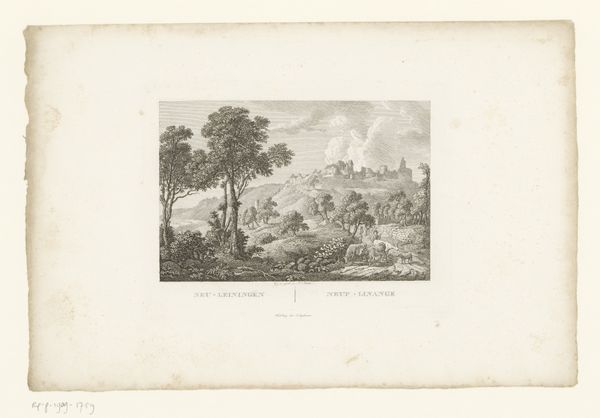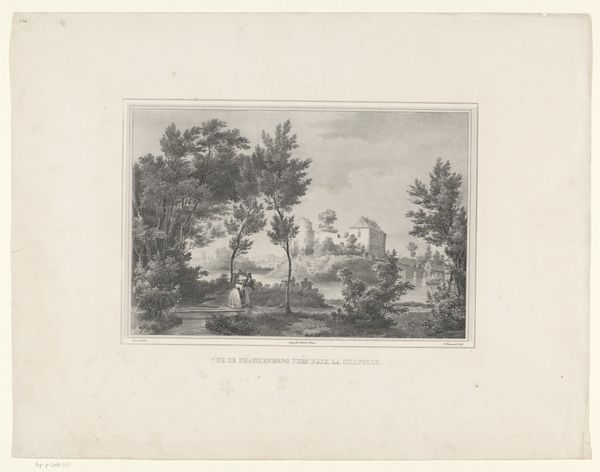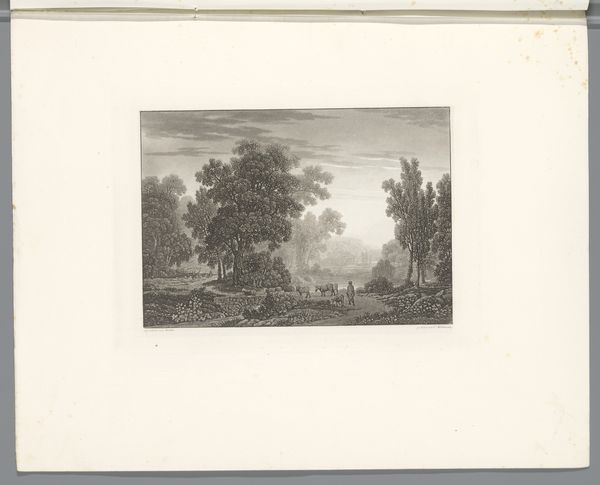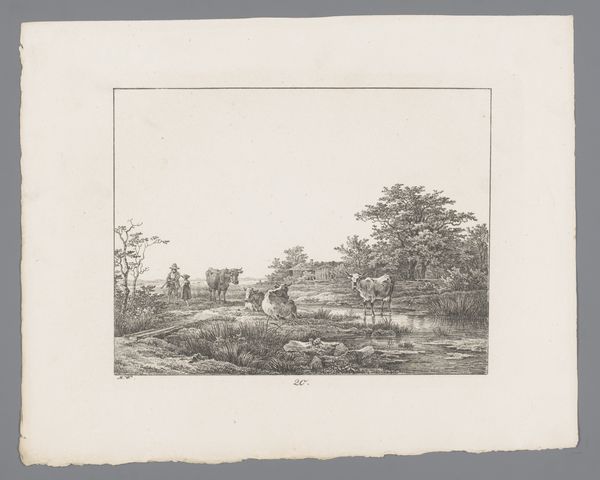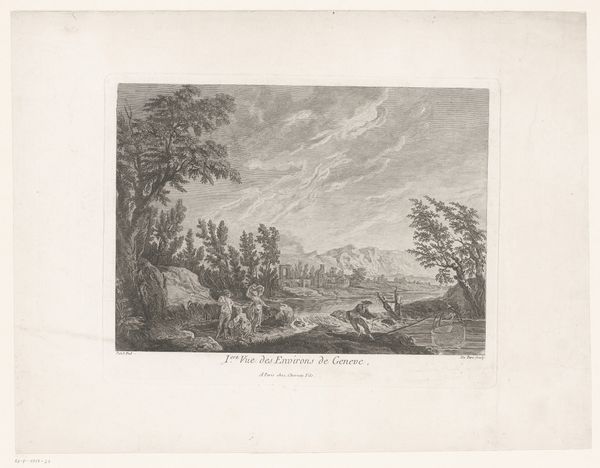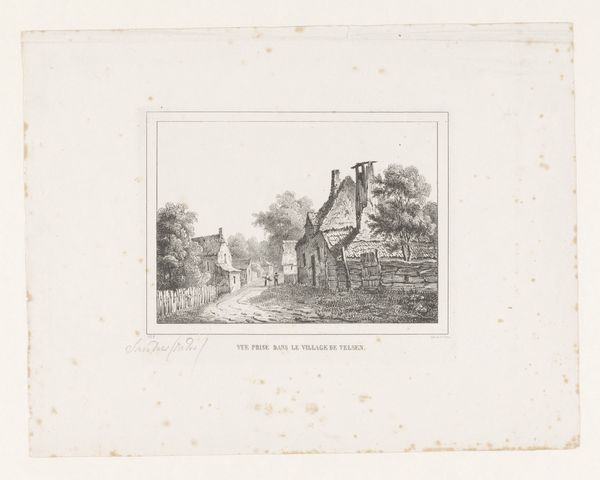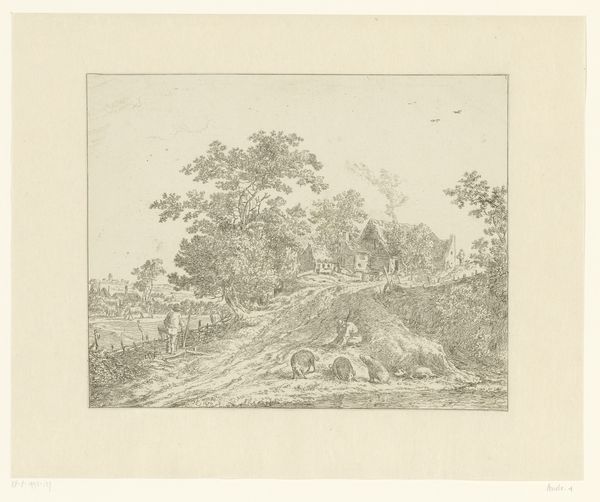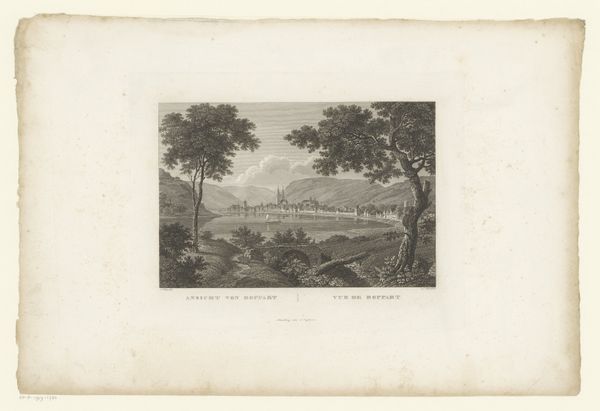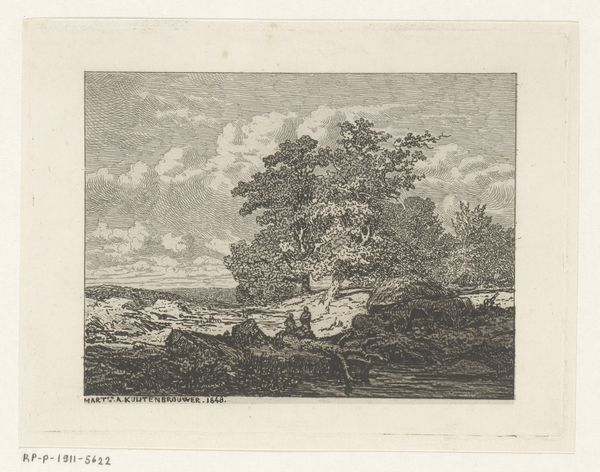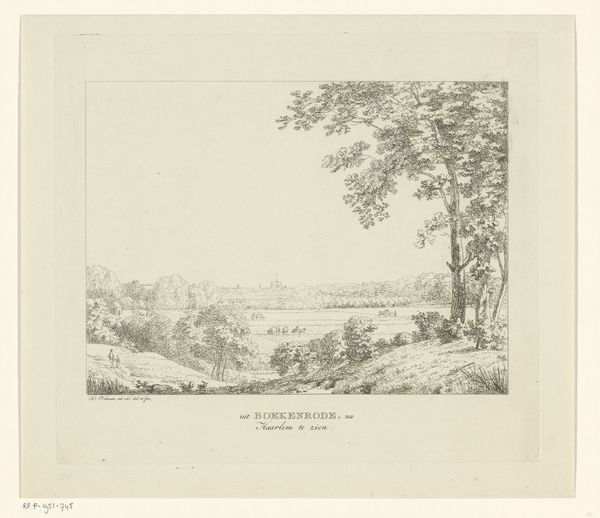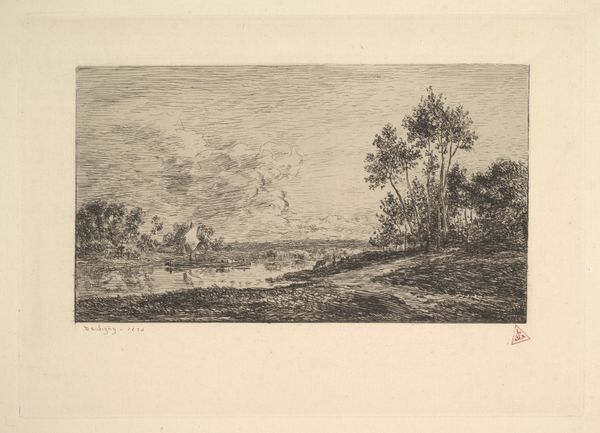
drawing, print, etching, paper
#
drawing
#
neoclacissism
# print
#
etching
#
landscape
#
paper
#
cityscape
Dimensions: height 181 mm, width 243 mm
Copyright: Rijks Museum: Open Domain
Curator: I'd like to introduce "Landschap met herders en zicht op Rocroi," or "Landscape with Shepherds and a View of Rocroi," an etching on paper, made sometime between 1781 and 1796, by Claude Mathieu Fessard. Editor: My immediate reaction is one of surprising calm, considering the figures and the relatively grand view. The tonality feels very evenly distributed, very controlled. Curator: That control aligns with the Neoclassical movement's ideals. The print likely served a purpose beyond mere aesthetics; Rocroi, in the Champagne region, held strategic importance. I'd want to examine this image within a history of land ownership and military strategy, as well as understand Fessard's status relative to the aristocracy. Editor: Yes, there is a subtle dialogue at play with the way that the landscape itself is depicted; note the classical arrangement with the darker elements to either side and the vista presented centrally in a kind of balanced harmony, so redolent of what structuralism and semiotics explore. Curator: Right, but also let's read the landscape itself, what is included and excluded in this image. What is being valued or mined as relevant in 18th century France? How does this view reinforce power dynamics or potentially challenge them? Considering gender, who has access to this landscape and on what terms? The figures we can see here are all male for instance. Editor: I see the visual balance though: the massing of foliage on the right echoes the distant copse on the horizon. Light is distributed evenly, serving to bring an overarching formal unity to the piece. This visual restraint underscores the aesthetic program. Curator: Precisely and through that same distribution we might better read the artist's intention regarding the values attributed to a specific territory. But it also prompts questions about whose voices and presences might be consciously or unconsciously erased from the dominant narratives of the time. Editor: Well, these careful considerations certainly give additional layers of interpretation beyond the initial sense of peaceful contemplation. It underlines, perhaps, how appearances can sometimes veil intricate webs of intention. Curator: Exactly, looking at Fessard's creation not only gives a window into an aesthetic, but to its underlying social conditions too.
Comments
No comments
Be the first to comment and join the conversation on the ultimate creative platform.

